Student Housing at UNI, 1876-1915
The University of Northern Iowa has been regulating student housing since the opening of the institution in 1876. From that time until the first residence hall opened in 1915, the university presented students with housing options that are quite distinct from those that today's students face. At times students were allowed to live on campus in educational buildings, and at other times they had to live off campus in local boarding houses.
On-Campus Housing
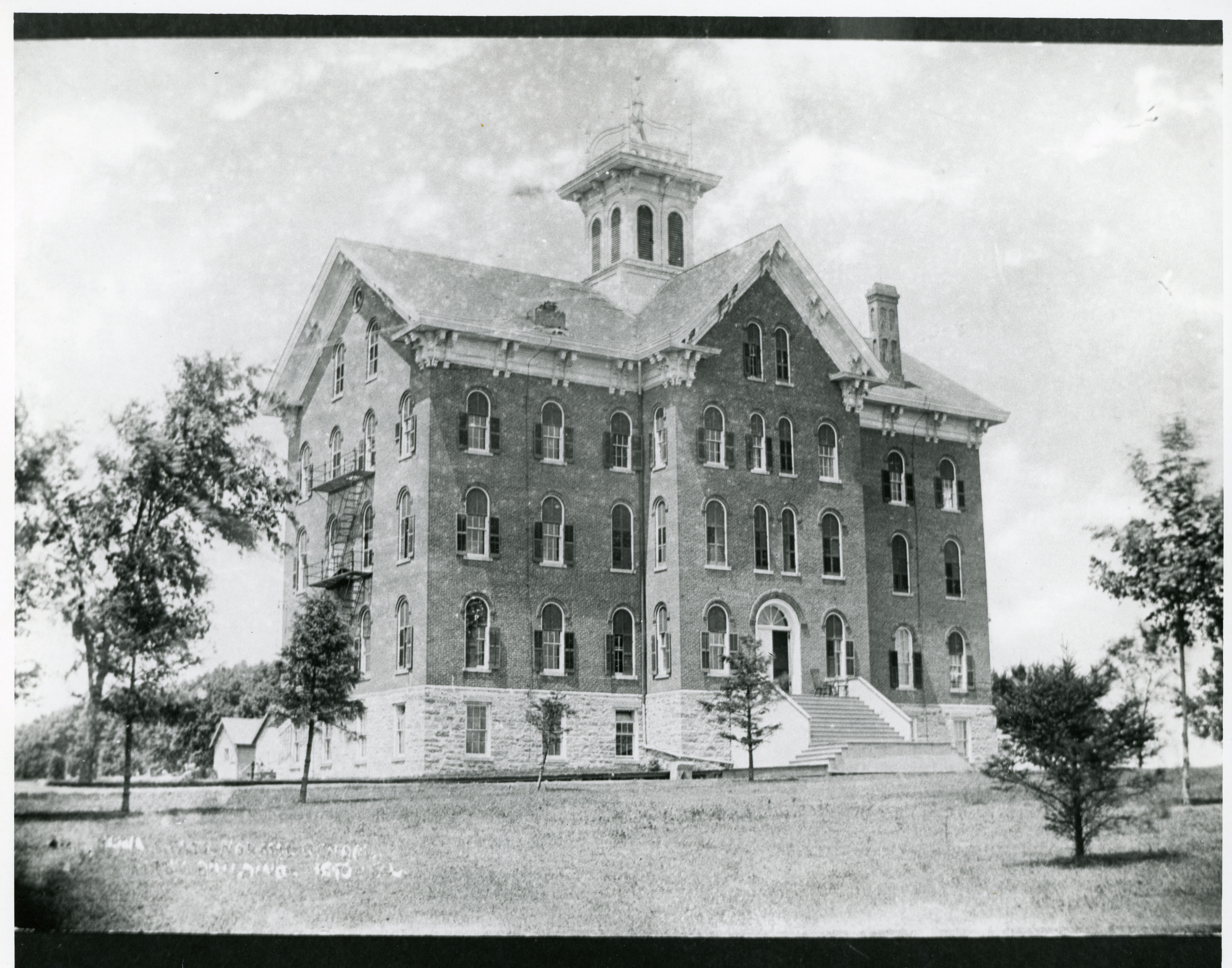
Boarding in Central Hall
When the school opened in 1876, the Iowa State Normal School, as UNI was called at that time, had only one main building.
Central Hall, which was once the old Soldiers' Orphans' Home, served as both a classroom building and a boarding house for instructors and students. Up to 120 boarders could be housed there.
Many students arrived in the area by train. Someone from the school would meet the students at the train station and transport them and their luggage to campus. They had this same service when leaving at the end of the semester.
At that time, students were not required to pay tuition to attend school. But they were responsible for paying other expenses, totaling around $121 per year.
Student Expenses in 1876
- Boarding: $2.65 per week
- Room, heat and light: $.50 in the spring and fall per week; $.75 in the winter per week
- Laundry: $.60 per dozen
Living Conditions
The living conditions were very tight in Central Hall. In 1876, the women occupied the second floor, while the men lived in parts of the third.
Each floor had four sections; each section was then divided by eight foot partitions into four smaller rooms, which were used as bedrooms. Two students were assigned to each bedroom. In between the sections was a long study room. Only one bedroom per section contained a window. For air, the other students depended on the draft which would float over the partitions.
Students who lived on campus were asked to provide their own beds, bedding, towels, and napkins. The school did provide straw ticks for the beds (if needed), kerosene lamps for light, and non-drinking water, which was piped up to the one water cock on each floor. Meals were served in the basement dining room. In 1877, two water closets (restrooms) were built in the Hall.
Having men and women living in the same building created a social atmosphere. Because they were so near, they had more opportunities for interacting. However, in that time period instructors and administrators felt male/female relationships must be monitored for the sake of propriety. This protectiveness and the early co-ed living arrangement were probably two of the reasons why campus administrators drew up strict rules for how men and women could interact.
Men's Dormitory-North Hall

In 1877, the men moved out of Central Hall and into their own dormitory. The old brick Chapel building, which was constructed soon after the school opened, was remodeled into living space and renamed North Hall.
As in Central, they used wooden partitions to make the bedrooms. However, no restrooms were added to the structure. The men lived there until the school discontinued boarding in 1892.
North Hall would later become the home of both the Custodian and Superintendent of Buildings and Grounds, and a student health center.
Rules for Boarders
On-campus boarders had to follow many rules while living in Central Hall, North Hall, and later in Old Gilchrist Hall.
They included:
- Students must remain in their own rooms during study hours--no visiting
- Students cannot leave the campus grounds or vicinity without the permission of the principal
- Students must keep their rooms in good order because they are subject to frequent inspections
- At lights out (around 10:00 p.m.), students are expected to put away their studies and go to sleep--they cannot leave their rooms
- No gentlemen in the ladies' rooms; no ladies in the gentlemen's rooms.
Early students did not have a resident assistant in their dormitory. Instead a Steward, William Pattee, and a Matron, Mrs. P.E. Schermerhorn, were hired and housed in Central Hall.
Duties of the Steward included collecting student bills, general upkeep of the buildings, and heading the Boarding Department, which is similar to the Department of Residence. The Matron was responsible for the dorms, made sure the rooms were in order, cared for sick students and instructors, supervised the dining room and laundry, and other duties as mistress of the household. The Matron's position was eliminated in 1879 and the duties were given to the wife of the Steward. The Steward's position was changed in 1892, as is described in the next section.
The End of On-Campus Housing
In 1892, the Boarding Department was dissolved and students could no longer live on campus. This decision stemmed from a need for the school to save money and have more space for classes. As a result, Central Hall was converted completely into classroom space and the Steward became the Custodian of Buildings and Grounds. The first Custodian was J.B. Miller, who was first employed in 1886 as Steward. The Custodian lived rent-free in North Hall, after it was remodeled for his family.
Boarding Houses
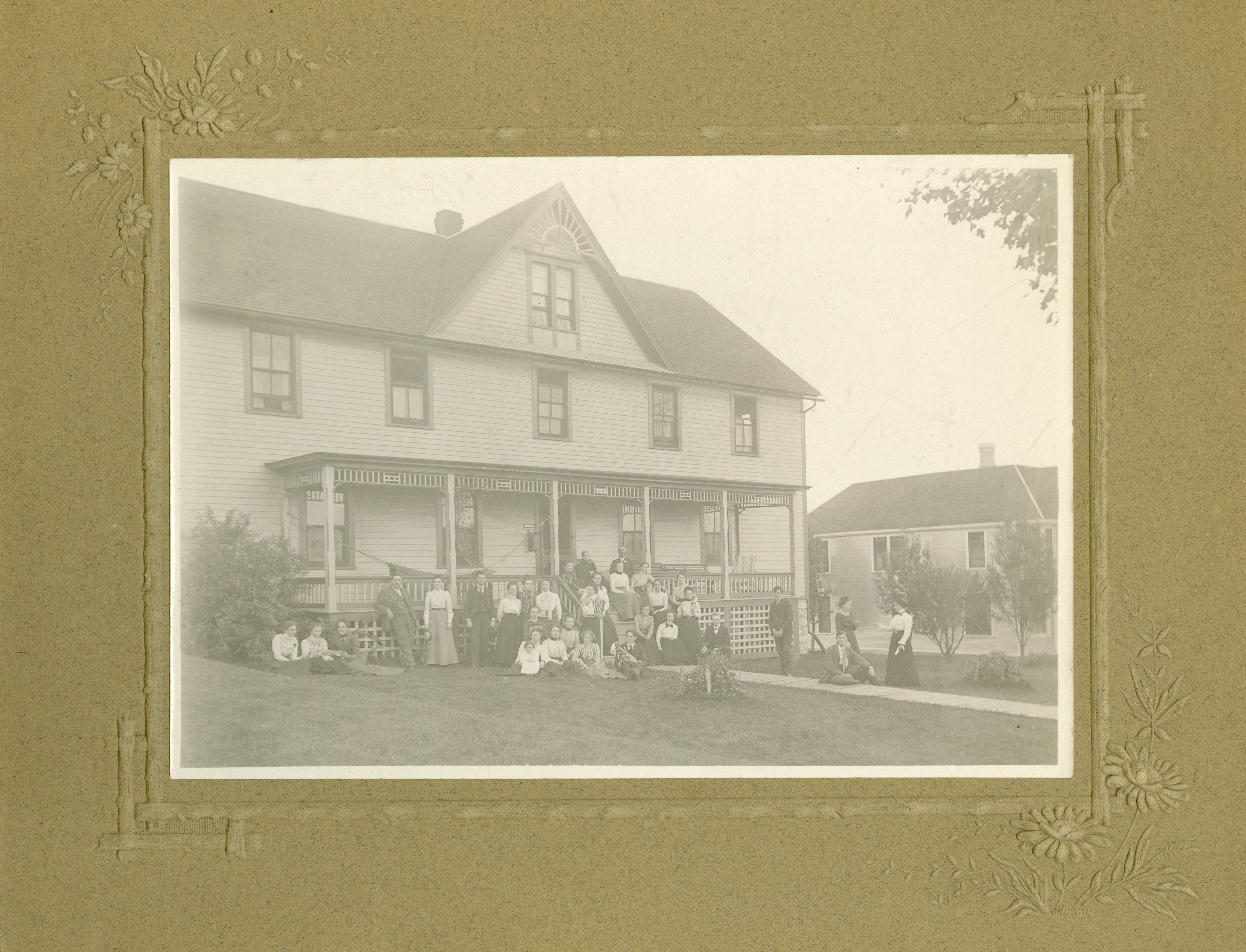
Since the boarding department no longer existed, the students had to arrange for their own off-campus lodgings. one of the options they had was to live in nearby boarding or rooming houses.
As early as 1887, private families from Cedar Falls constructed houses on and near Normal Street (now called College Street ) which were used as boarding houses.
In 1889, 6 houses were used to board ISNS students; by 1912, 1100 students could be lodged in the Hill area.
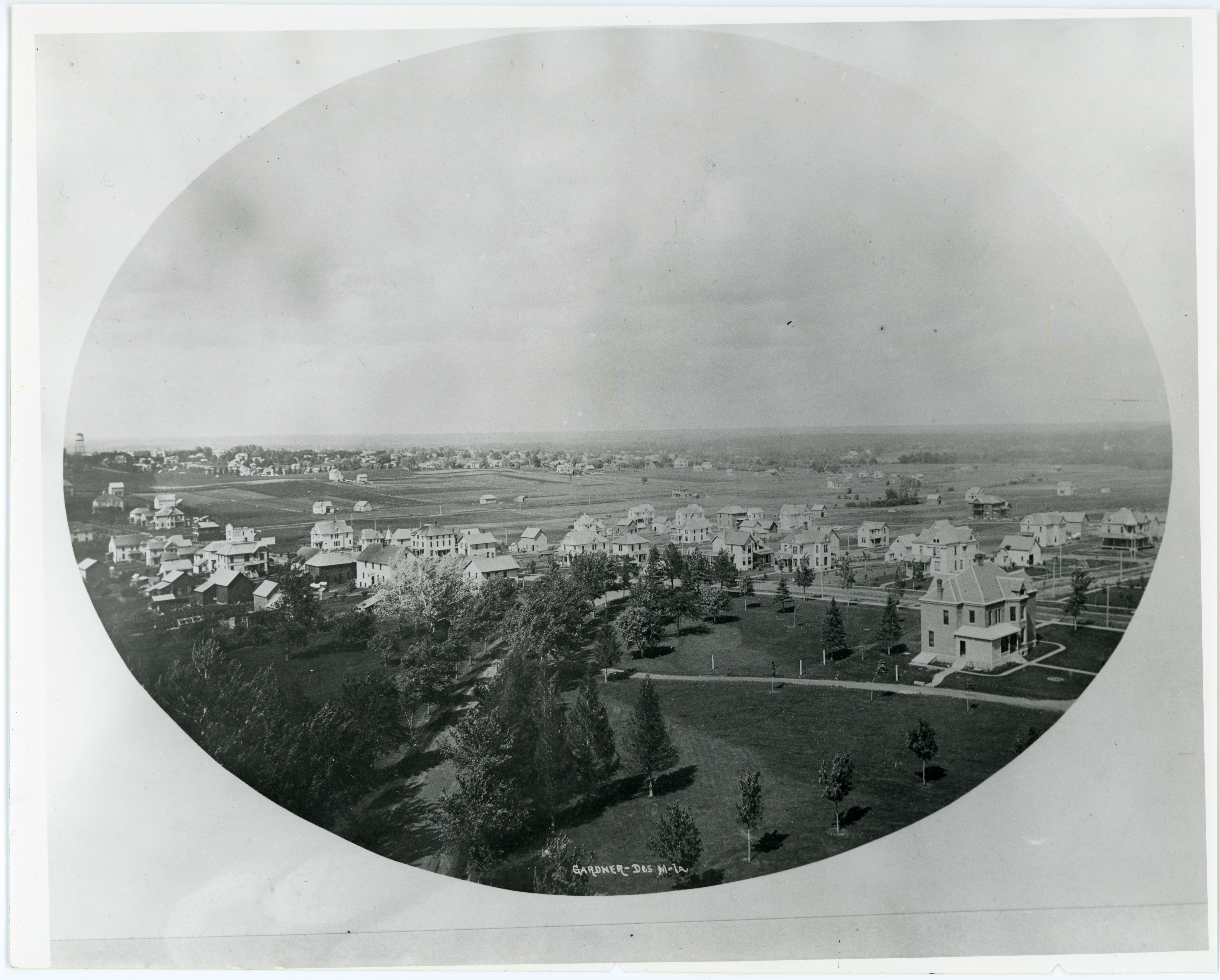
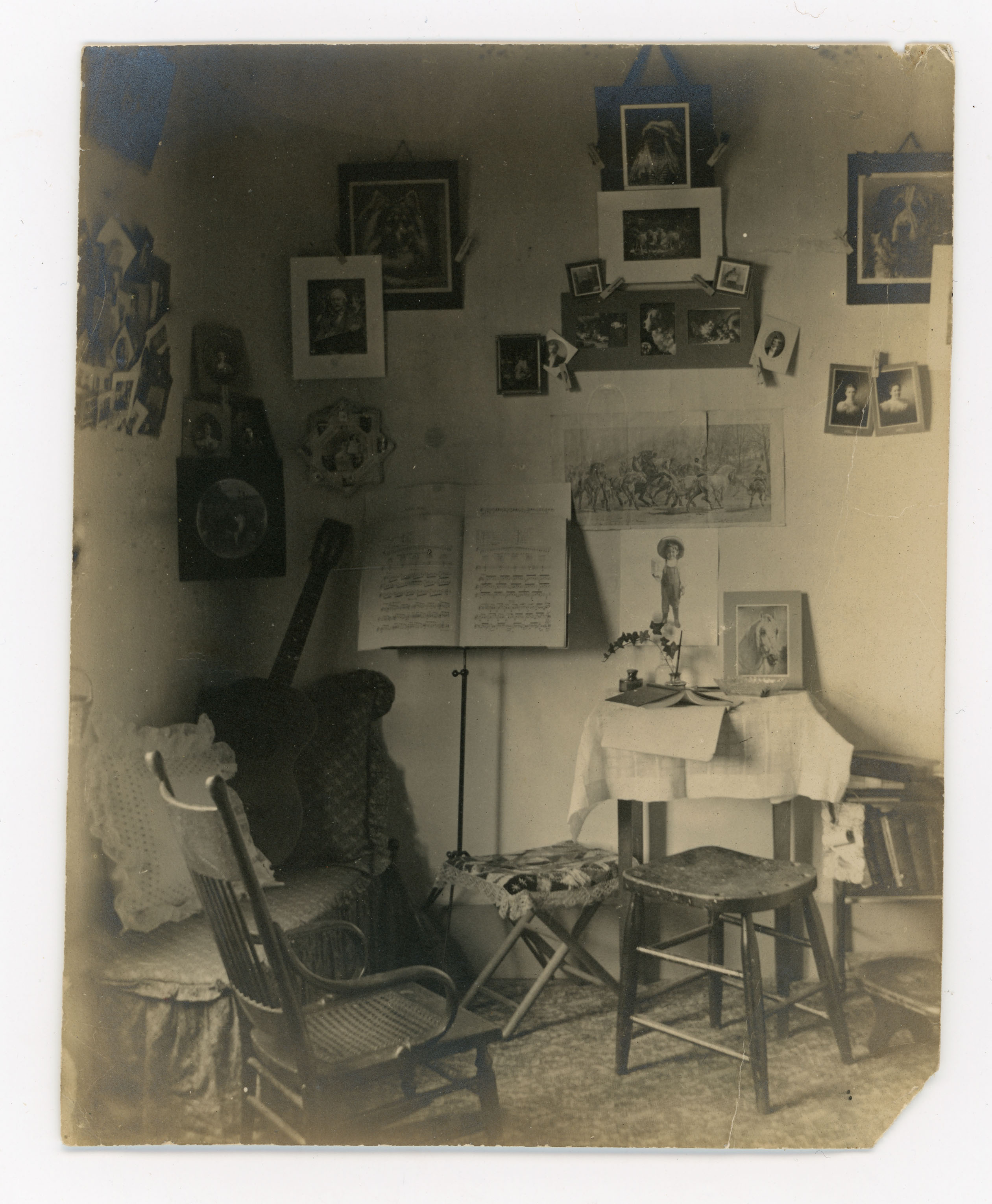
Early rooming houses were on Normal (College) Street, Olive Street, Walnut Street, Tremont Street, Iowa Street, 22nd Street, 23rd Street, and 24th Street. Although more houses were constructed later, the majority of the early ones were on Normal and Olive streets.
The ISNS was located slightly southwest of Cedar Falls, as in this 1896 photo above. The city is on the far horizon and Normal Hill is closest to the camera. The boarding houses are those nearest Normal Hill. Eventually, the two areas would grow together and become the present day city. The current Ethnic Minorities Cultural and Educational Center is in the bottom right corner.
The students received both room and board at the houses, which were named for their owners. The expenses were comparable to on-campus living.
In 1891, the charges were between $3.00-3.50 for a week; in 1912, rent was $2.00-$2.50 per week and meals $3.00-$4.00 per week.
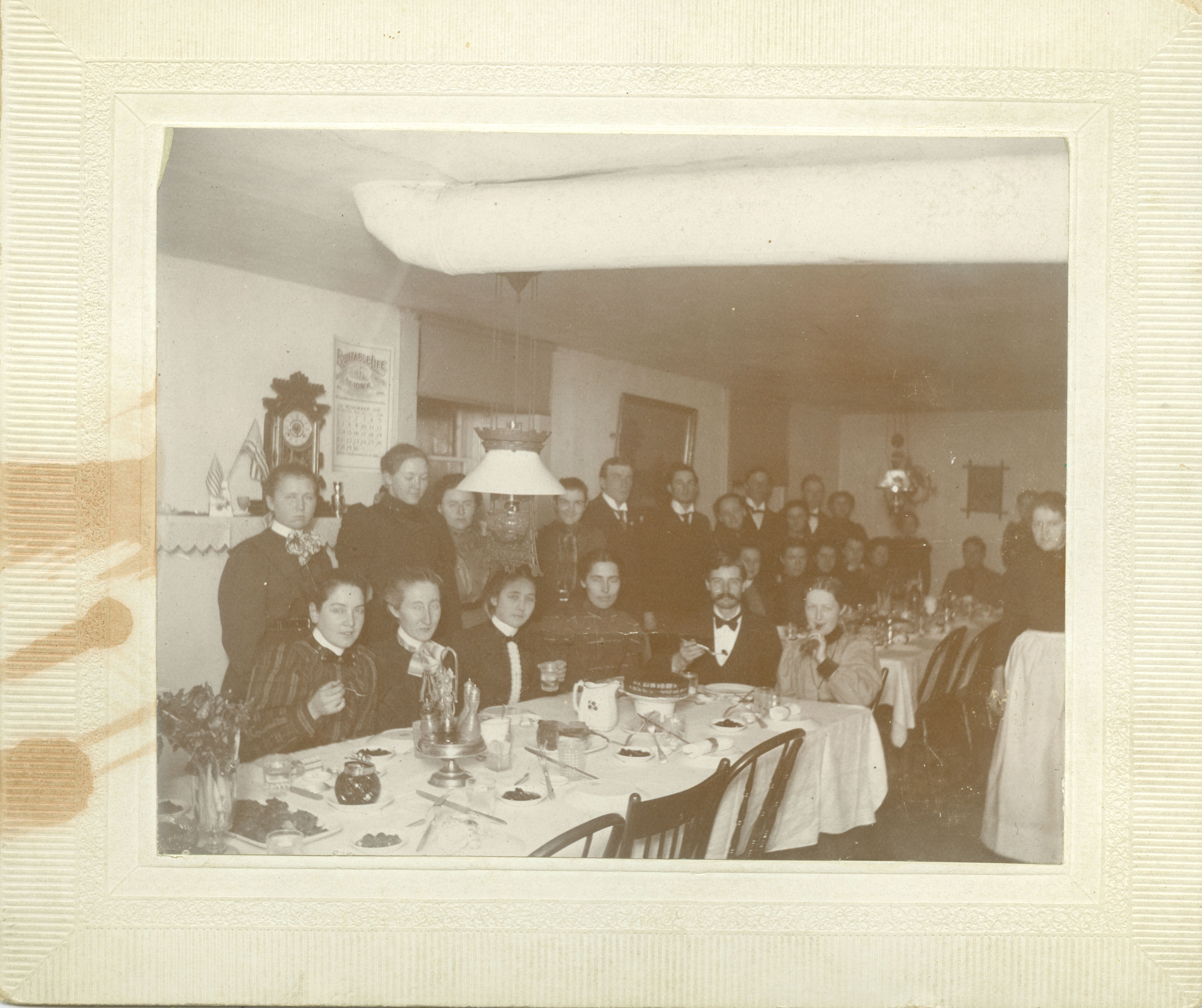
Group photos of the boarders were taken much the same way as dormitory house pictures are taken today. Some rooming houses even created photo scrapbook as keepsakes.
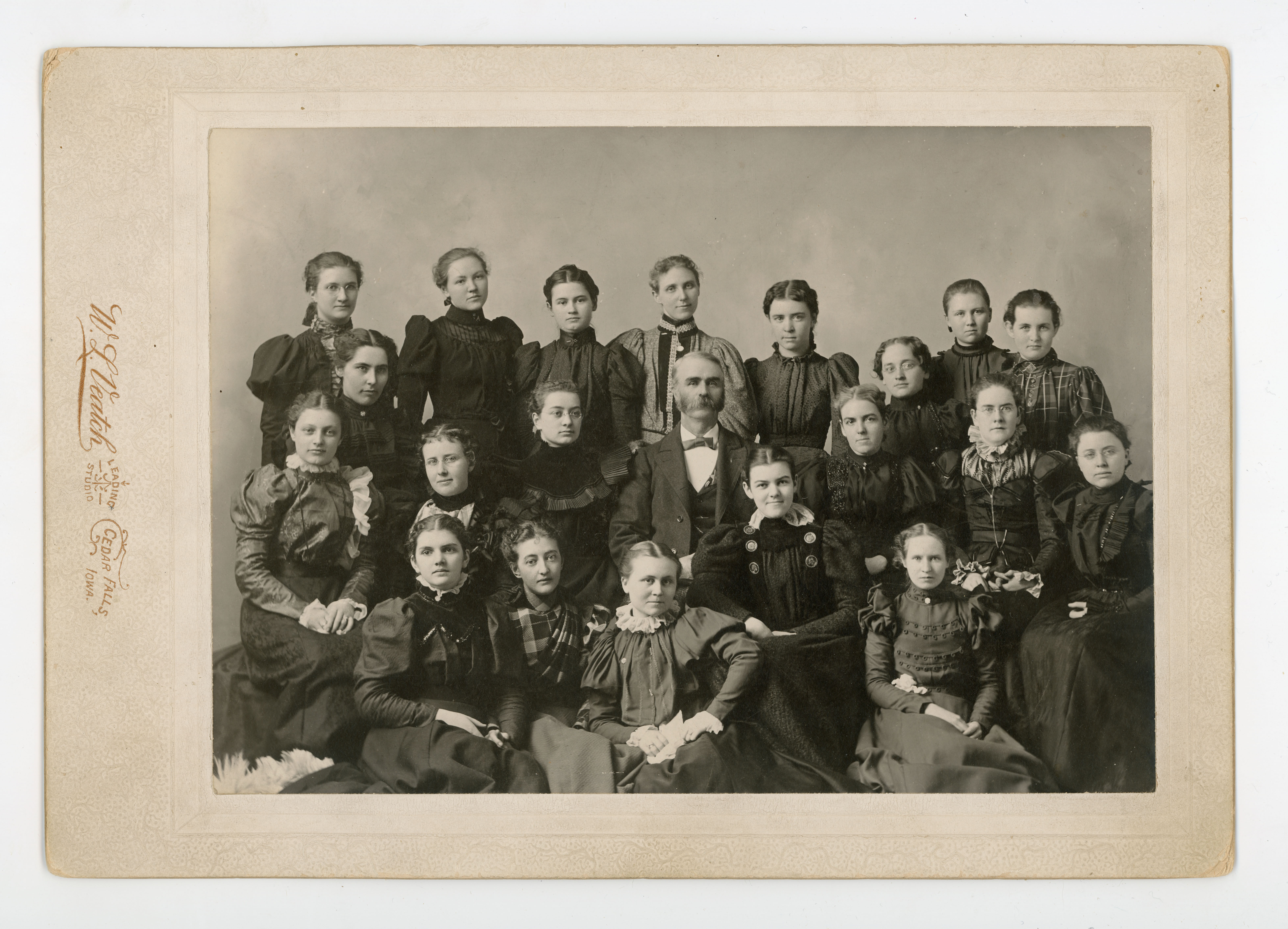
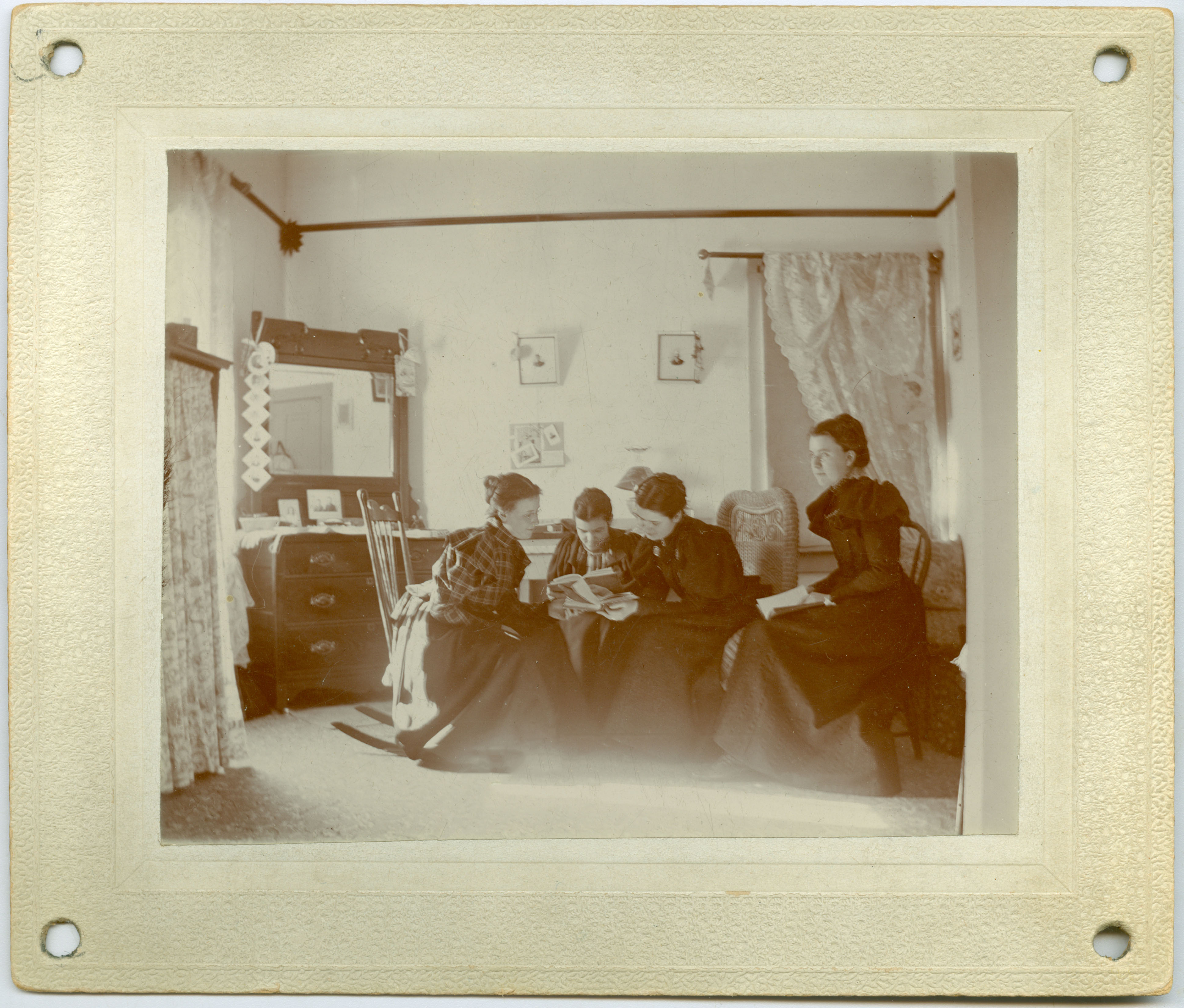
Although students were not living on school property, their lives in the boarding houses were still closely monitored. For instance, students could only live in accredited rooming houses. Accredited houses were those whose owners agreed to have parietal responsibilities for their boarders and uphold certain regulations concerning the welfare of students and proper living conditions.
The regulations included:
- Women could not have male callers in their rooms
- They must study from 2:00-5:00 p.m. and 7:00-10:00 p.m. Monday through Thursday and Saturday
- Students could not receive social calls during study times
- They had to be in by 10:00 p.m.
- Women and men could not live on the same floor
- Sicknesses had to be reported to the teachers and to the President's office
- Written contracts must be made between the proprietors of the houses and the boarders
- and the houses must have suitable parlors for callers.
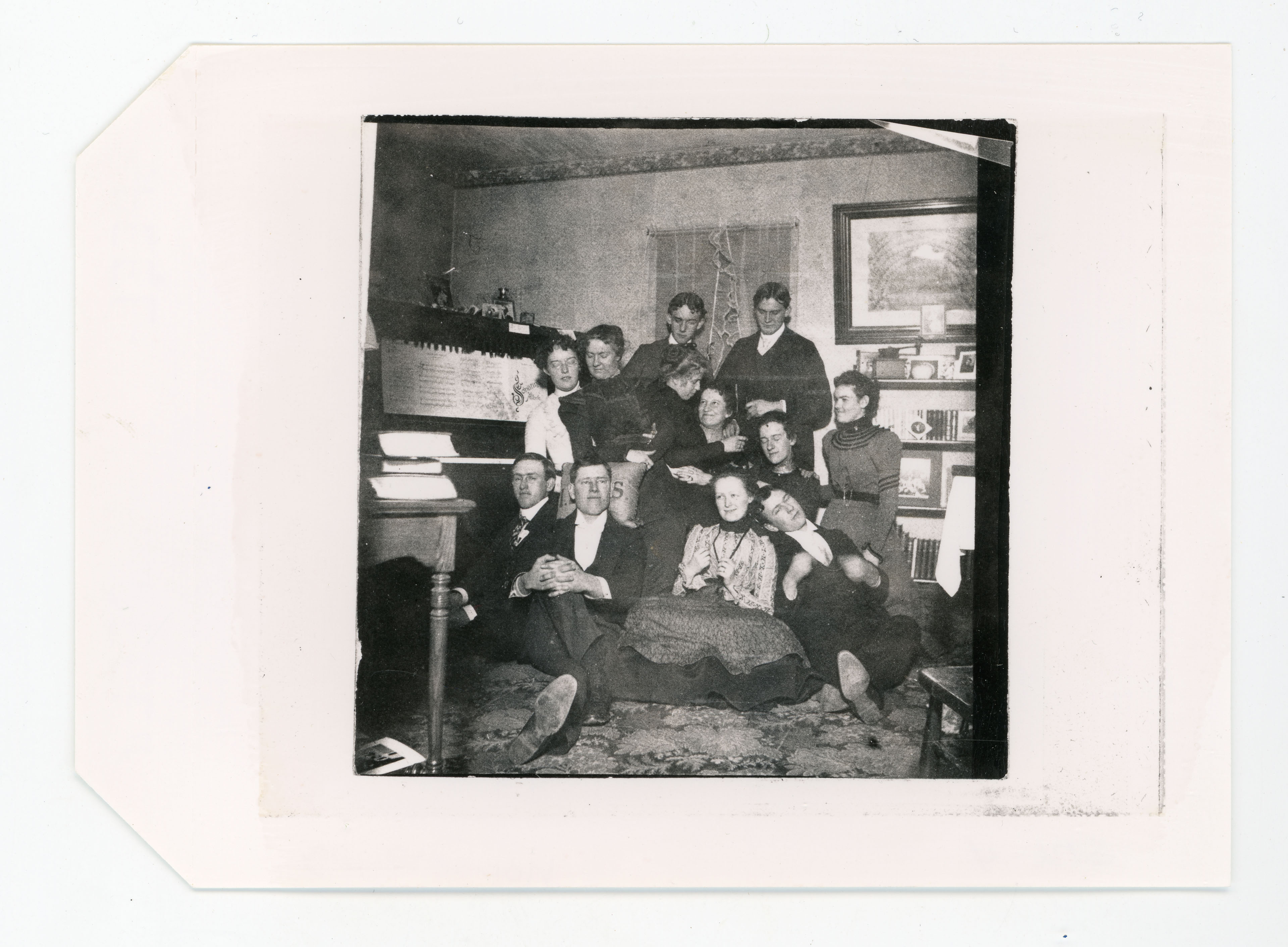
If the owners agreed to President Homer H. Seerley's rules, their names were placed on the list and recommended to students.
[Partial] List of Accredited Lodging Houses, Fall 1906
Normal Street
- 1903 Mrs. Noah Wiler
- 2005 Mrs. Stewart
- 2116 Mrs. Chase
- 2604 Mrs. F. D. Cram
Olive Street
- 2022 Mrs. N. B. Carter
- 2322 Mrs. Hemsworth
- 2422 Mrs. Leland
Many of the rooming houses still exist today in the College Hill area. Some have been converted into apartments while others are still private residences.

Dean of Women
Women students outnumbered men students almost three to one at the Normal School. Although Faculty members visited the houses regularly to check on both the students and the house, there were still behavior problems. Several students had been expelled or suspended from school because of their questionable behavior in the 1906-07 school year. This prompted the administration to appoint a Dean of Women who would supervise the young women in all aspects and inspect the boarding houses. Marion McFarland Walker was named the first Dean of Women in 1908.
By 1912, both President Seerley and the Board of Education felt there was a need for a public dormitory on campus. In a long report, Seerley stated that administrators needed to think about the residents of Cedar Falls and Normal Street in particular. When boarding ended on campus, the homeowners responded to the school's need for housing by investing in the area; they built houses, sent their children to the Campus School, and agreed to college supervision of the boarders. To build a residence hall would then affect the economy of Normal Hill.
Other Boarding Options
Students could also club board or self-board: Club Boarding was used most times by men. The houses were managed by the members so it was much cheaper than other alternatives.
In self boarding, students could rent accommodations or buy their own house.
The First Residence Hall
After 23 years, on-campus housing was again offered upon the completion of the first wing of Bartlett Hall in 1915. However, Bartlett Hall was designed as a women's dormitory. The men would have to wait until 1936 for on-campus housing when the first men's dormitory, Baker Hall, was finished.
Created by Susan Witthoft, with special thanks to Jonathan Russell and Gerald Peterson, Special Collections and University Archives, December 1996; photos updated and citations added by Graduate Assistant Eileen Gavin, March 14, 2025.
